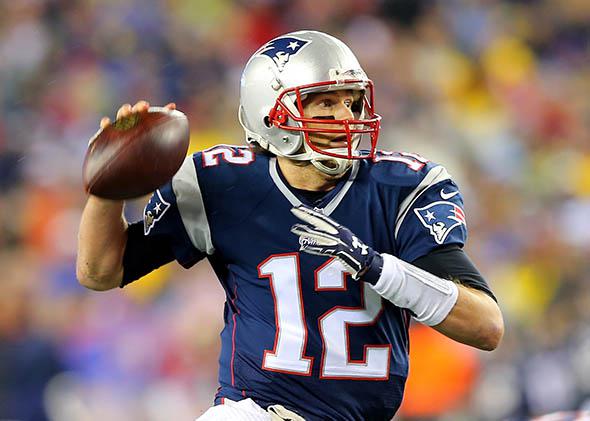Judging by the intense grilling Tom Brady received in his press conference on Thursday, Deflate Gate, Ballghazi, whatever you want to call it—the PSIran Contra Affair?—is being treated by fans and sports media like it’s a felony. In reality, though, it’s at best a misdemeanor. Actually the saga of the saggy football is more like a civil violation by which under-inflated tires can lead to fines for truck drivers.
But context and perspective are a poor match for pre–Super Bowl fretting over legacies, and truth, and shame, and deception.
Of course if it is proven that the Patriots knowingly deflated balls, they should be punished to the full extent of the rules. The league says that the base level punishment would be a fine of a paltry $25,000, or approximately 0.2 percent of Tom Brady’s 2014 compensation. The laughably low amount tells you how serious an offense the NFL deems football deflation. By way of comparison know that Seahawks running back Marshawn Lynch was fined $20,000 for, um, “adjusting” his cup after scoring a touchdown in the NFC championship game.
But why should inflating a football to the specification of the thrower of the football even be against the rules? The NFL has, over the years, passed rule changes designed to allow the passing game to flourish, which is exactly what’s happened. As offenses, passing yards, and quarterbacks have ascended, so too have ratings and profits. This is at the very core of the NFL’s massive, nearly culture dominating popularity. The interaction between the football and the thrower of the football is the fundamental engine of a league where revenue is approaching $10 billion per year. Realizing this, in 2006 the NFL even allowed quarterbacks to use their own footballs in games, footballs that are often treated like a recalcitrant prisoner in a CIA black ops site—see, for example, this 2013 New York Times story on Eli Manning’s harsh treatment of his balls.
The change of rules, driven by the lobbying of Peyton Manning and Tom Brady, was deemed so uncontroversial that the rules committee passed it unanimously. Jeff Fischer, the Tennessee Titans coach at the time, described the change as “a comforting factor for the quarterbacks to be able to use their own balls.”
That’s the point. The amount of air in a football only really affects how each team’s quarterback and offense plays. Under-inflated footballs are easier to catch and grip in cold and wet weather, but they can’t travel as far. Some quarterbacks, like Aaron Rodgers, even like their footballs over-inflated. If every quarterback were allowed to use his ideally inflated football, then every offense would be on an equal footing to come up with a strategy that fits his team under every condition. This would make for better football games.
If a quarterback likes his football pounded with a mallet and waterboarded until it’s a faded husk of leathery oblongness, that’s fine. Why then is a slightly under-inflated football a cause of consternation bordering on madness?
This extremely important piece of equipment isn’t like a doctored baseball, which can be scuffed or globbed with an outside substance to achieve more motion and thereby deceive an opposing batter. A football is not like a baseball bat, which can be corked to affect the flight of the ball. A football is not even like a soccer ball or basketball, which are used by both teams, and therefore could affect the pace of play to the point that it could conceivably disadvantage one side.
A football is more like a baseball glove, which can be broken in, beat up, worn down, or tuned into an almost sentient being. Former MLB player Walt Weiss used the same glove for 12 out of the 14 years he played. The glove was nicknamed “The Creature” and would reportedly confer its stink for days on end to anyone who dared put his hand inside it.
In baseball, that’s a charming anecdote, in line with the quirks of a whimsical game. In football, a slightly underinflated ball is portrayed as evidence of perfidy, to be stamped out of a highly regimented endeavor.
Either way, you get the sense that the very organized, focused, and, yeah sure evil, organization that is New England gives not a whit for this football focused folderol. Their obsession over the next 10 days will have Wilson stitched across his jersey’s back, not across its dimpled side.
